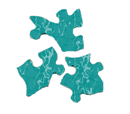
Intervention Scheme
The Intervention Scheme is designed to describe and communicate multidisciplinary practice, practice that is intended to prevent illness, improve or restore health, decrease deterioration, and/or provide comfort before death. Practitioners use the Intervention Scheme to describe health-related care plans and services for individuals, families, and communities. The Scheme is a comprehensive, orderly, non-exhaustive, mutually exclusive taxonomy or hierarchy. It consists of three levels of actions or activities. Four broad categories appear at the first or most general level. An alphabetical list of 75 targets or objects of action and one “other” are at the second level. Client-specific information generated by practitioners is at the third, most specific level. Using the Intervention Scheme with the Problem Classification Scheme and Problem Rating Scale for Outcomes creates a comprehensive problem-solving model for practice, education, and research.
The case studies on the Website illustrate how to apply the Intervention Scheme. The entire Intervention Scheme, more instructions and guidelines for use, and additional case studies appear in the 2005 book.
Categories:
Teaching, Guidance, and Counseling: Activities designed to provide information and materials, encourage action and responsibility for self-care and coping, and assist the individual/family/community to make decisions and solve problems.
Treatments and Procedures: Technical activities such as wound care, specimen collection, resistive exercises, and medication prescriptions that are designed to prevent, decrease, or alleviate signs and symptoms of the individual/family/community.
Case Management: Activities such as coordination, advocacy, and referral that facilitate service delivery, improve communication among health and human service providers, promote assertiveness, and guide the individual/family/community toward use of appropriate resources.
Surveillance: Activities such as detection, measurement, critical analysis, and monitoring intended to identify the individual/family/community's status in relation to a given condition or phenomenon.
Targets:
anatomy/physiology
anger management
behavior modification
bladder care
bonding/attachment
bowel care
cardiac care
caretaking/parenting skills
cast care
communication
community outreach worker services
continuity of care
coping skills
day care/respite
dietary management
discipline
dressing change/wound care
durable medical equipment
education
employment
end-of-life care
environment
exercises
family planning care
feeding procedures
finances
gait training
genetics
growth/development care
home
homemaking/housekeeping
infection precautions
interaction
interpreter/translator services
laboratory findings
legal system
medical/dental care
medication action/side effects
medication administration
medication coordination/ordering
medication prescription
medication set-up
mobility/transfers
nursing care
nutritionist care
occupational therapy care
ostomy care
other community resources
paraprofessional/aide care
personal hygiene
physical therapy care
positioning
recreational therapy care
relaxation/breathing techniques
respiratory care
respiratory therapy care
rest/sleep
safety
screening procedures
sickness/injury care
signs/symptoms-mental/emotional
signs/symptoms-physical
skin care
social work/counseling care
specimen collection
speech and language pathology care
spiritual care
stimulation/nurturance
stress management
substance use cessation
supplies
support group
support system
transportation
wellness
other
